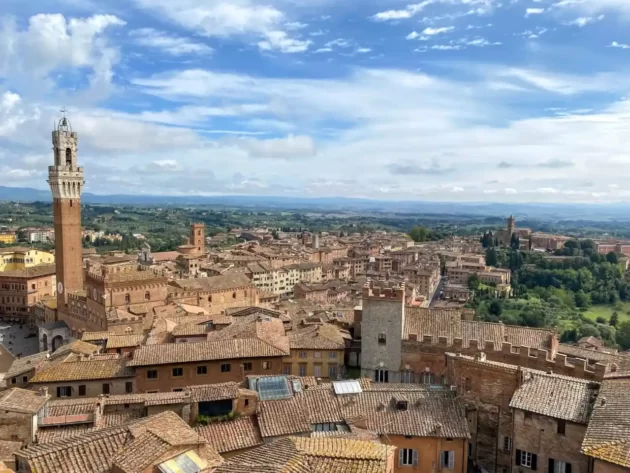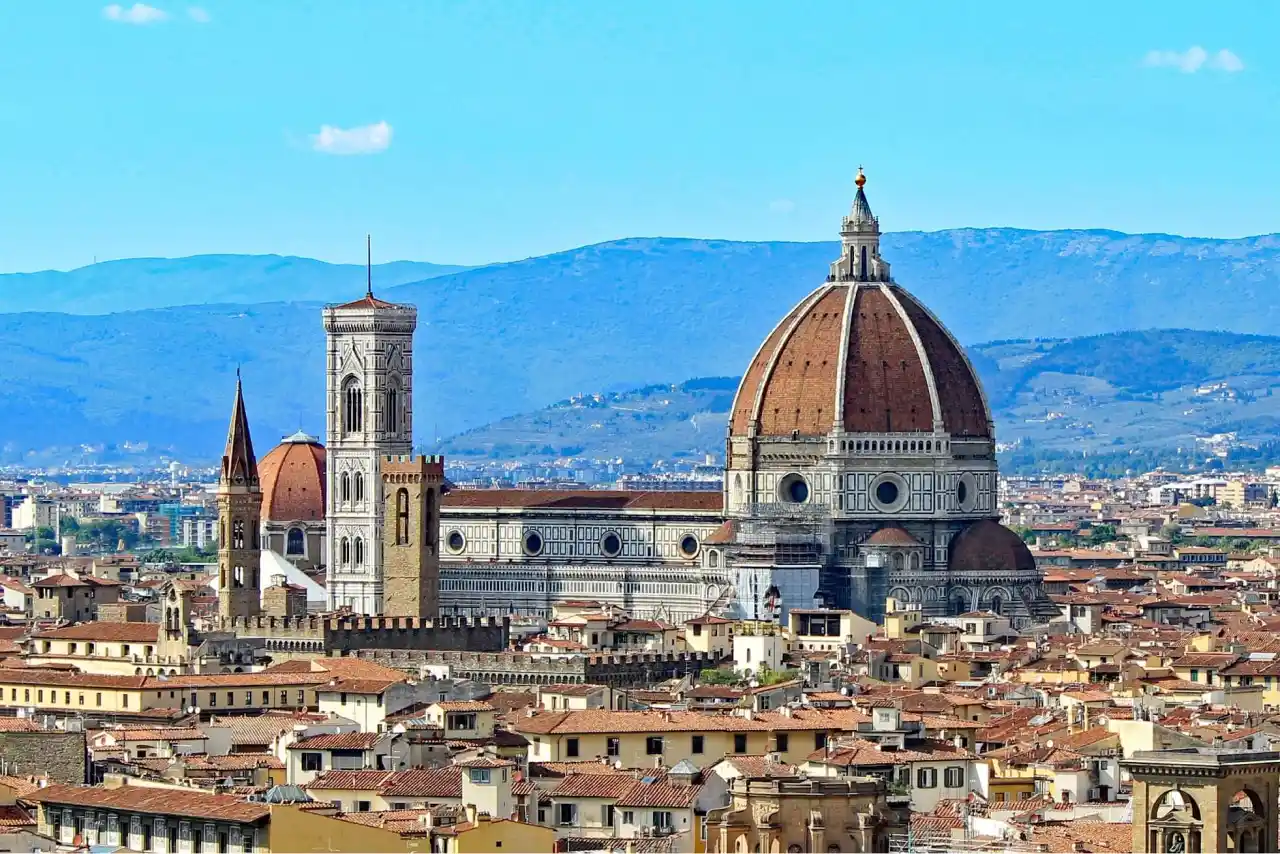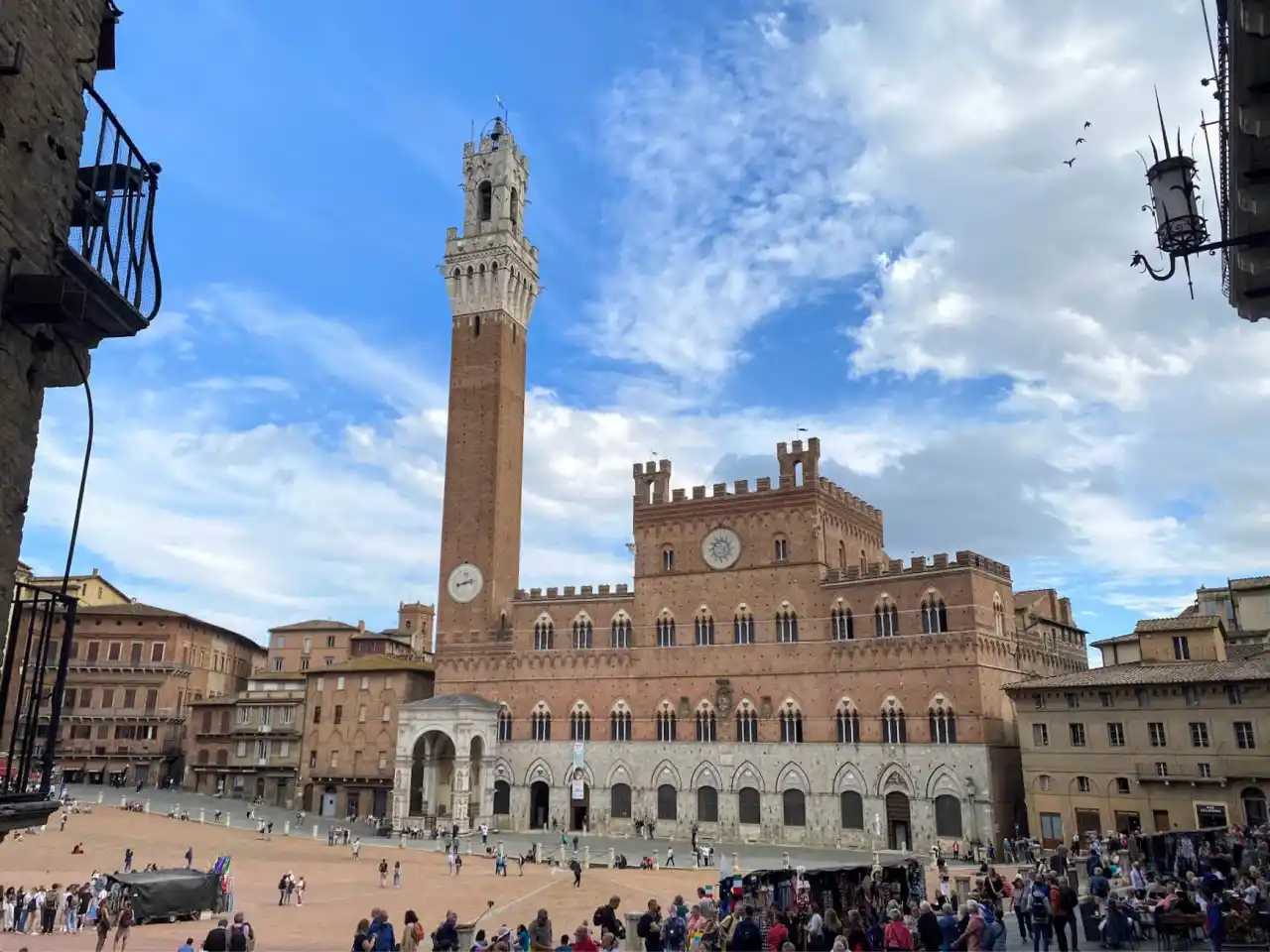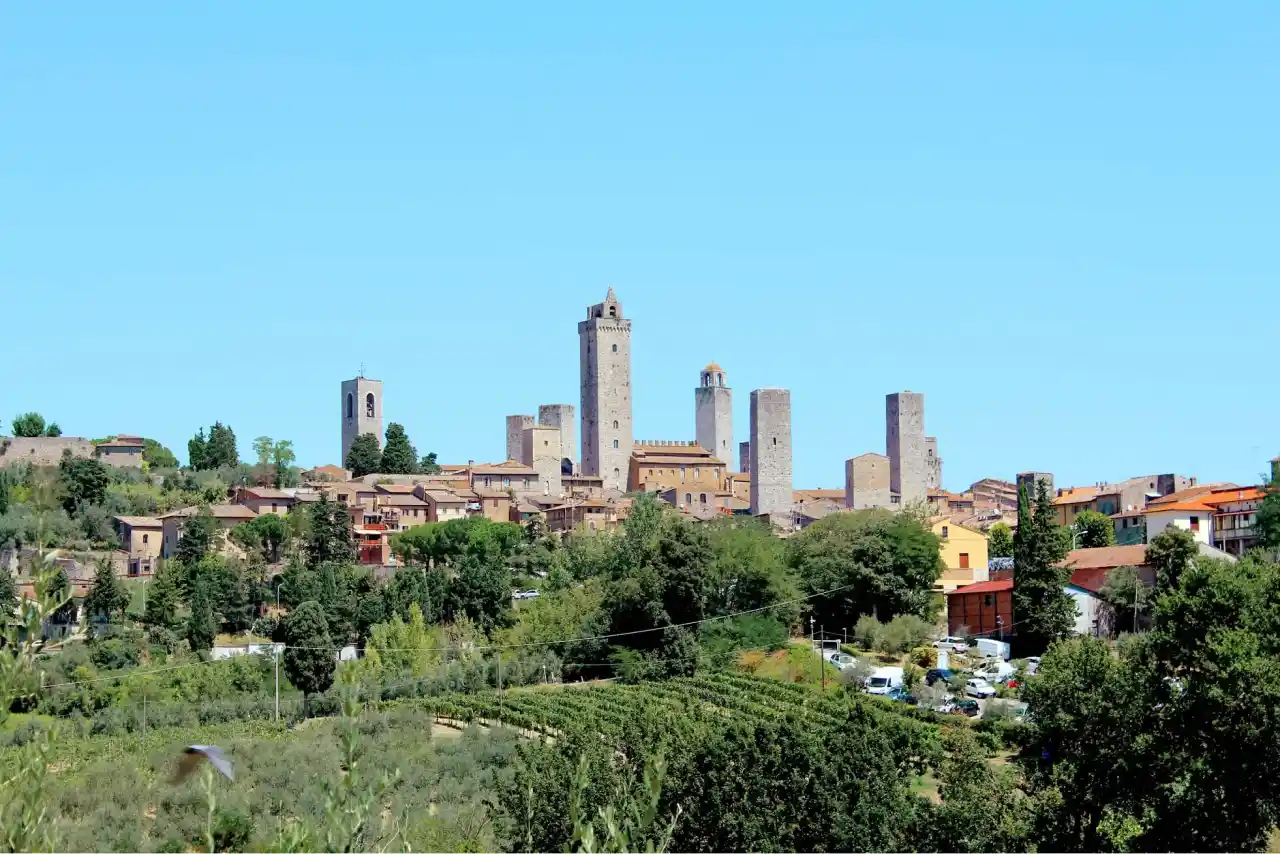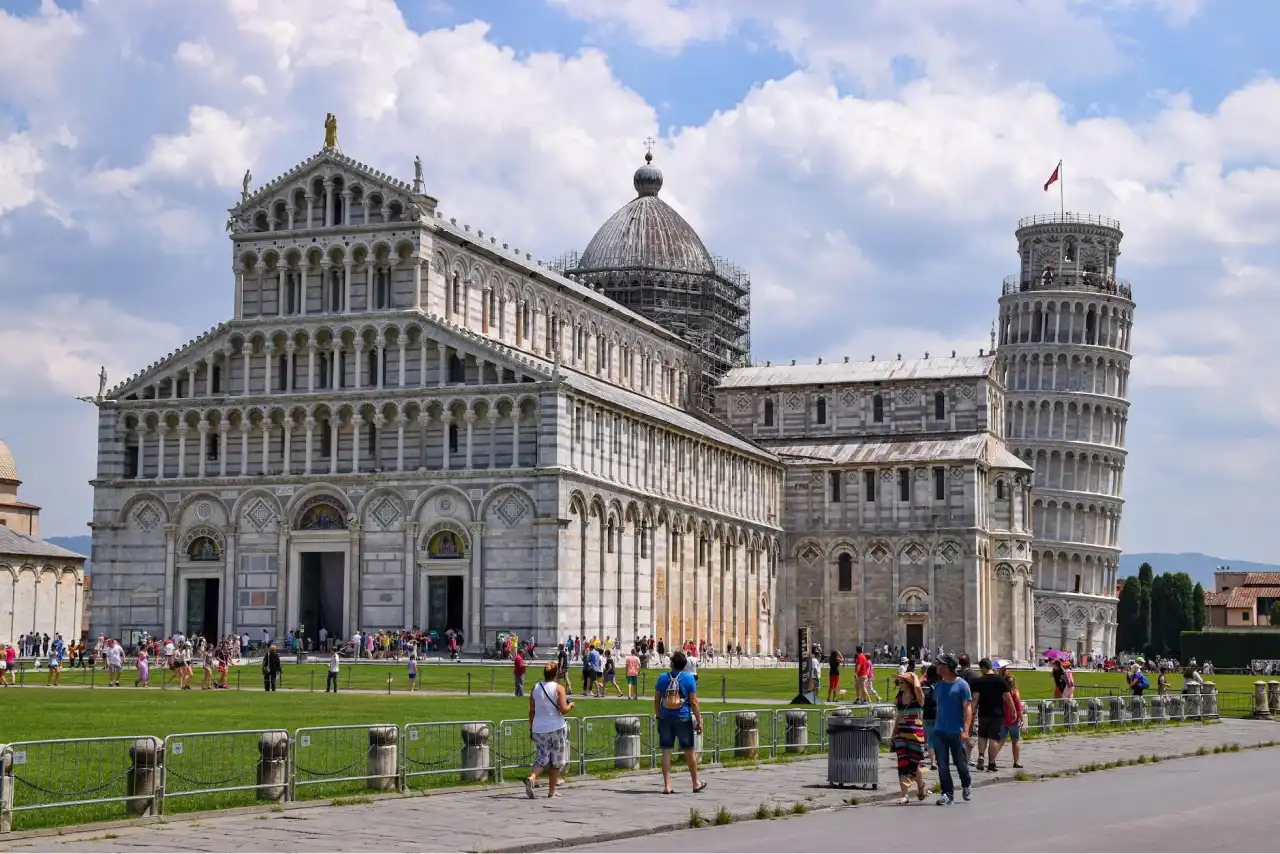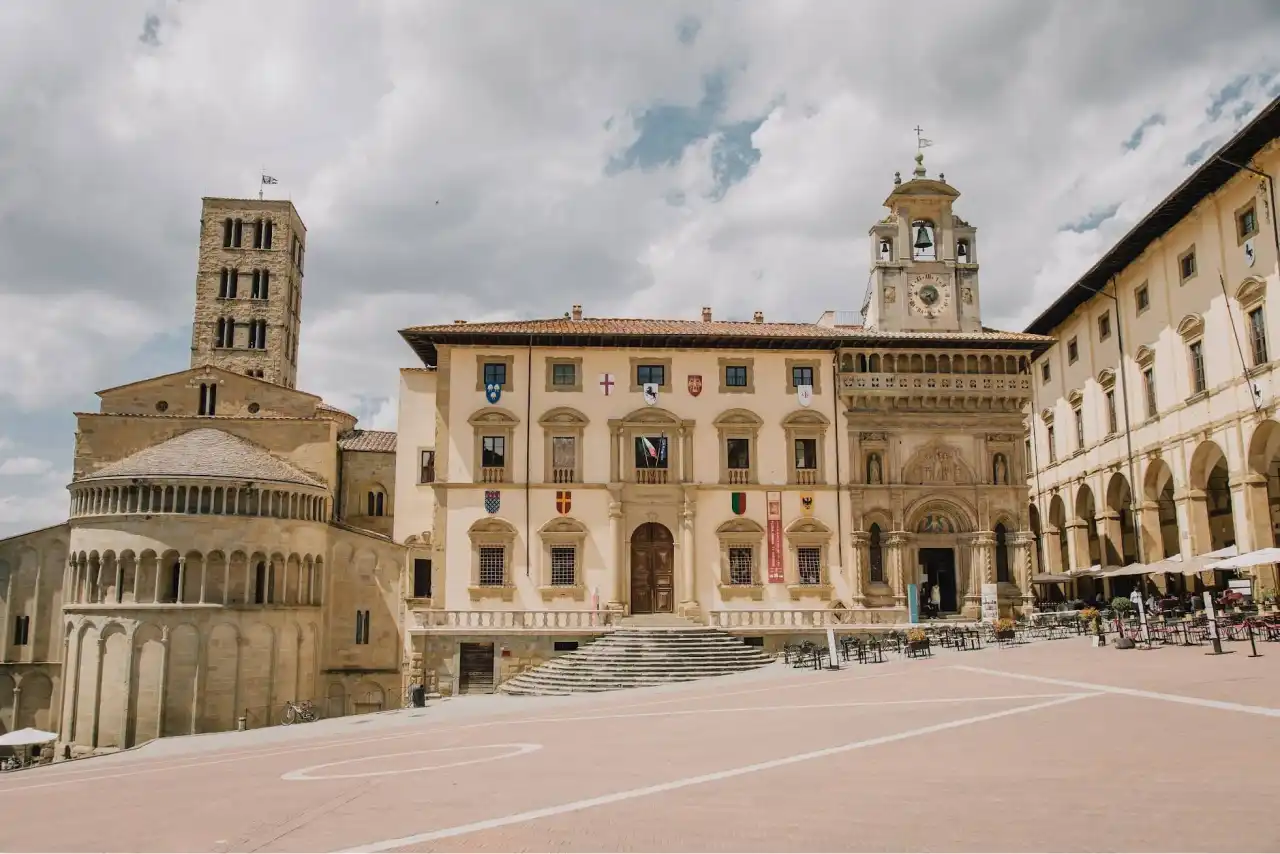With its beautiful scenery, delicious food and fantastic art, Tuscany is a must-see place for any cultural tourist. It’s home to numerous lovely towns like Florence, Siena, San Gimignano, Arezzo, Luca, Pisa, and many more. The best way to visit Tuscany is by having a base in one of those places and seeing the rest on day trips. And don’t worry if you won’t have a car, because here is the complete guide on how to travel around Tuscany on public transport.
How to travel around Tuscany on public transport
This is a sponsored blog post by Omio, an online platform for easy flight, train and bus bookings.
Tuscany is the best explored on a round trip. With its hills, lots of vineyards, historical villas and charming towns, the whole area is so dreamy. Travelling through Tuscany feels like going on a historical journey. It always reminds me of paintings at the Rijksmuseum made by the 17th-century Dutch masters who travelled to Italy.
I visited Tuscany twice this year and have visited many of these places during those trips. So, here are some of my tips on how to explore Tuscany by using public transport.
⤷ Read more: Where to travel in 2023
What to see in Tuscany
However, let’s start with what to see in that Italian region first. Here are just some of the towns listed, but you’ll find numerous interesting cultural sites throughout Tuscany.
Florence
The largest town and the capital of Tuscany is Florence. It’s famous for its cathedral with a beautiful Renaissance dome. A former hometown of the powerful Medici family, Florence is also home to two museums that anyone interested in the Italian Renaissance should visit. Uffizi Gallery is where you can see some of the most famous artworks from the Renaissance time. Galleria dell’Accademia is home to a great collection of Michelangelo’s sculptures, among which the statue of David is the most famous.
⤷ Read more: 10 Cultural spots to visit in Florence
Siena
Located some eighty kilometres (fifty miles) further away, Siena was always a historical rival to Florence. Visiting that lovely town makes a great day trip while in Tuscany. When in Florence, you feel as if you have stepped back in the Renaissance time. However, the architecture in Siena is even older. With its narrow streets and historic houses, it looks much more medieval. This town’s highlights are its Romanesque-Gothic cathedral, the city hall with some of the most beautiful medieval frescoes (with a theme of the good and bad government) and its oval-shaped main square.
San Gimignano
Since I first saw a photo of San Gimignano, a small town filled with medieval towers, I have wanted to visit it. It is one of the best preserved medieval towns and, because of that, listed as a UNESCO World Heritage Site. It’s still home to fourteen medieval towers that survived all the wars throughout the history. Surrounded by strong city walls, San Gimignano is home to many beautiful historical houses, palaces, piazzas and good restaurants.
⤷ TIP: While there, be sure to try a local wine called Vernaccia di San Gimignano.
Lucca
Lucca is one of the most unique medieval towns in Tuscany and home to well-preserved Renaissance city walls. It’s known as the city of art because it was the birthplace of many world-famous composers, like Giacomo Puccini, the author of La Boheme and Madama Butterfly. Some places that shouldn’t be missed in Lucca are its medieval cathedral, the elliptical-shaped Piazza dell’Anfiteatro and the Romanesque-Gothic Gunigi Tower.
Pisa
Although famous worldwide for its leaning tower, Pisa is home to many more historical landmarks. Pisa University was founded back in the 12th century. The city is filled with medieval churches and palaces. Some of the architectural landmarks in Pisa are its cathedral, baptistery and monumental cemetery, Campo Santo. In the Museo dell’Opera del Duomo you’ll find artworks made by two of the most famous medieval sculptors from Pisa – Nicola Pisano and Giovanni Pisano.
⤷ TIP: Galileo Galilei was born in Pisa. The international airport located next to the town is named after him.
Arezzo
The charming town of Arezzo is one of the Italian art centres no cultural tourist should miss. It was the hometown of Giorgio Vasari. He wasn’t only a gifted artist, but also wrote the first biographies of his contemporaries, Renaissance masters. It’s home to numerous interesting cultural sites. Cimabue’s Crucifix in the San Domenico’s Church (13th century) and Piero della Francesca’s History of the True Cross fresco (15th century) shouldn’t be missed.
⤷ Read more: Beautiful autumn destinations in Europe
Exploring Tuscany by train
Tuscany is well connected by train and you can easily visit some of the places in Tuscany by using public transport. The train stations are usually located close to the town centre. One of the main Italian train lines connecting Rome with Milan passes through Tuscany. So, the trains are quick and depart regularly. Siena, Lucca, Pisa and Arezzo have direct train connections with Florence. You can visit them on a day trip or even plan a round trip to Tuscany by using public transport.
⤷ TIP: I visited Tuscany by car, as well. Italians have a specific way of driving that could be difficult to adjust for people from countries with different driving styles. And one of the main benefits of travelling around Tuscany by public transport is that you don’t need to look for parking (which could be quite an issue in the narrow streets of these towns).
Exploring Tuscany by bus
Getting around Tuscany by bus could also be a great way to explore that region of Italy. It’s especially handy if your accommodation is located outside the city centre or in some of the smaller villages in Tuscany. During my last trip to Florence, I stayed in a villa at the edge of the town. So, when I wanted to visit Siena from Florence by public transport, it was much easier to take a bus instead of a train. Also, don’t be afraid that buses will be slow because they often drive on a highway between the towns.
Busses are also very nice to use as a mode of public transport in those places, especially in Florence. They’ll get you right in the city centre for a very reasonable price – one journey will cost you 1,50 euros.
Using Omio to explore Tuscany by public transport
If you’re unsure what the best public transport options are for you, apps like Omio come in very handy. You can type in your departure and arrival destinations, and it will calculate the best travel options for you. Once you pick up your journey, you can buy your tickets online. That’s also useful because sometimes the tickets could be more expensive if you buy them from a bus driver.
Here is the link to all the train options for travelling in Italy that will hopefully help you plan your trip to Tuscany.
Tuscany is a beautiful region of Italy and home to numerous charming towns worth exploring. I hope this guide will help you with planning how to travel around Tuscany with public transport. Have you travelled around Tuscany on a train or a bus? Let me know if you have any additional tips to share.
The blog post ‘How to travel around Tuscany on public transport’ was sponsored by Omio, an online service for booking plane, train and bus tickets. However, as always, all opinions are my own.

